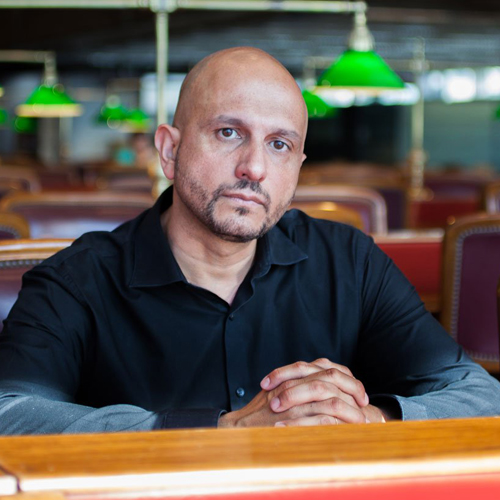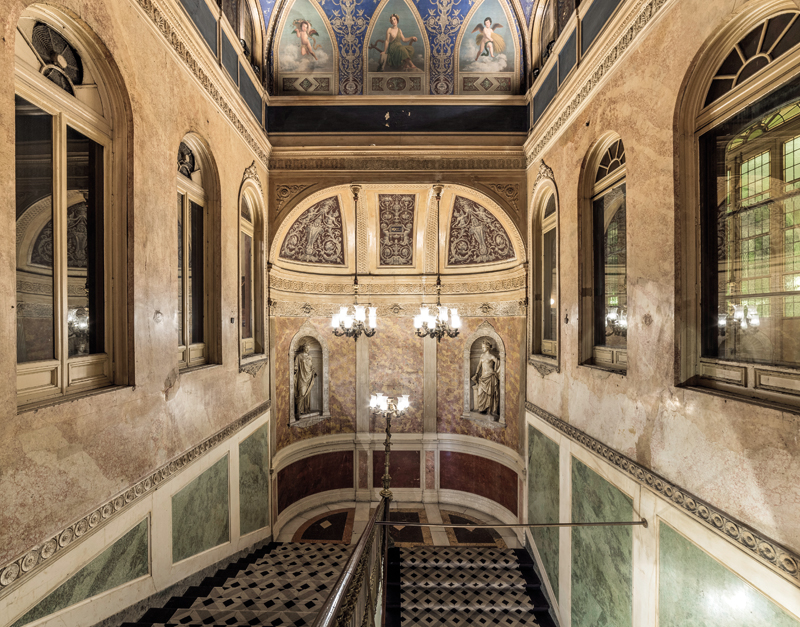All the passages in the world share a certain magic: they elicit a conversation between two spaces, two worlds. The writer Jorge Carrión invites us to travel in some “time machines” of this type in the city he calls his home.
To reach the sanctuary of Asclepius, the Greek god of medicine, it was necessary to cross a long gallery, the ceiling and walls of which were dripping wet: it was believed that the falling drops of sacred water cleansed the pilgrim’s spirit. Since ancient times, natural or man-made tunnels, bridges or rock-hewn stairs have been symbols of the passage between two worlds. In the modern city –a world in itself– passages have occupied this metaphorical space. One need only trace them in the poetry of French surrealism, in Walter Benjamin’s essays or in the short stories of Julio Cortázar to confirm this magic of interdimensional lifts. In El otro cielo (The Other Sky), for example, Cortazar’s narrator admits that “passages and galleries have always been my secret homeland”. It was at the Güemes Arcade in Buenos Aires that he left behind his adolescence. And thanks to the power of desire and of literature, he was transported to the legendary passages of Paris.
All the world’s cities have passages and in some cases more specifically arcades. Most of them form part of the functional structure of the metropolis, like back alleys or markets. But what interests me is the illustrious minority: the arcades which cross a city block –imitating the English model or the French passages–, giving rise to a microworld, a village, a garden or a shopping centre. They connect two very distinct realities, inviting one to travel.
To travel through time. Through number 12 at Calle Carretas in Madrid one enters an old shop arcade that was formerly the site of various bars and other establishments but has now been monopolized by watchmakers, which is why it is known as the Watchmakers Arcade. This is an extremely rare phenomenon: while everywhere else in the world the streets where craftsmen’s shops were grouped by guilds are quickly disappearing, in Madrid just the opposite has happened. Here, experts on clocks of all periods devote their time to repairing worthless gewgaws while awaiting the occasional appearance of beautiful antique timepieces in need of resurrection.
The area around the Puerta del Sol was the ideal place to build arcades in the middle of the 19th century because the monasteries had just been suppressed, freeing a great deal of land. For the first time it wasn’t the municipal or monarchic policies that changed the urban physiognomy but rather private initiative. And not only did the city’s physiognomy change, but its customs as well: the people of Madrid quickly got used to having coffee or hot chocolate, or to purchasing medicinal herbs, in those then very modern covered galleries. Most of them went about disappearing as the 20th century wore on but it is still possible to walk through a few of these now vaporous spectral arcades, like the Pasaje de Matheu (between the calles Espoz y Mina and Victoria), which “in former times –it was built in 1840– was a gallery covered by a wrought-iron and glass roof”, with “three floors of luxury shops and cafés, forming the epitome of modernity”, according to the urban historian and poet Sergio C. Fanjul. This was the site of the first terraces, which were the materialization of the ‘strange’ idea of putting the cafés’ tables in the street. Or like the shop gallery of the Palace of the Marqués Gaviria, which was built in 1846 and which still displays some of its original luxury and splendour in areas like the Hall of Mirrors, which was inaugurated by Isabel II (the legend holds that here there was an underground corridor leading to the Royal Palace and that the Queen used it to meet with her lovers). For decades it housed discotheques and businesses selling goods confiscated by the Customs Service. Now it is struggling to reinvent itself while more shops are closing down than new ones are opening. The arcade’s main entrance was originally the horse gate.
Close by, in an arcade that also opens onto Calle Arenal, there is a statue of Pérez the Mouse, Spain’s equivalent of the Tooth Fairy. The reason is that in Luis Coloma’s original story –published a little over a century ago– one learns that the celebrated rodent lived here at number 8. To be specific, in a biscuit box in the basement of the Prast sweet shop. This is literary territory. A few steps away lies Pasadizo de San Ginés, a passage leading to Madrid’s famous hot chocolate bar, an epicentre of the critical nocturnal earthquake of Bohemian Lights by Ramon María del Valle-Inclán, a grotesque and hallucinatory journey to the dark side of Spain’s capital.
It may be mentioned, before finishing, that many of these arcades do not appear in Google Maps and this is precisely one of the reasons why it still makes sense to travel.
The Paris avant-gardists’ cousin
The mythology of the passages took shape during the years of the historical avant-gardes, in the interwar period, thanks to two brother-books: Le Paysan de Paris, by Louis Aragon, and The Arcades Project, by Walter Benjamin. The great Spanish avant-gardist was Ramón Gómez de la Serna, who found in Madrid’s Rastro flea market his own particular labyrinth of passages, his own time machine. One of the capital’s cultural secrets is his office, which is on display at the Conde Duque cultural centre. This is a reconstruction of his studio, which was a sort of cabinet of curiosities with fascinating collages spilling over the folding screens. This portable nomadic museum (the writer took exile in Buenos Aires) is well worth a visit.
La librería, in Madrid
To learn more about this subject, it is a good idea to read Pasajes comerciales de Madrid, by Carmen del Moral Ruiz. This is one of the many books to be found at La Librería, a bookshop specialized in publications about Spain’s capital. This shop, which opened in 1986, stands at number 80 in the Calle Mayor. Like arcades, bookshops are gateways to the secret dimension of big cities. Not only do you find books on history, art, literature or legends, but you can also purchase maps, photographs, prints and vintage postcards. In short, they are a sort of concentrated flea market that opens every day (while Madrid’s famous Rastro is born and dies every Sunday morning in the Lavapiés quarter).
Photos: Javier Sánchez Martínez.











